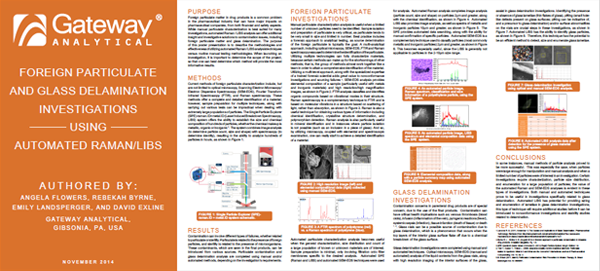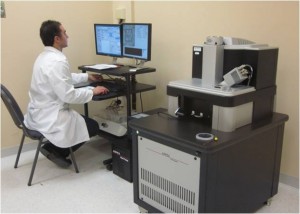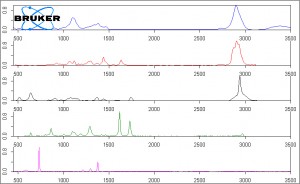Glass delamination(1) has become a bit of a hot topic in the area of parenterals over the past several years. Glass delamination is, indeed, a serious issue which can not only cause pharmaceutical companies millions of dollars in recalls, but also stands as a safety hazard to end users. Delamination is essentially the flaking off of the top layers of a glass surface into the liquid contents of a pharmaceutical vial, syringe, or other container. Numerous companies have experienced this issue, and have had to open investigations(2) to address the issue. The question is, how can we be proactive, rather than reactive, in addressing concerns with glass delamination? How can we minimize the risk of experiencing a delamination issue, in order to protect the welfare of end-users and uphold the quality of our products?
Rebekah Byrne
Recent Posts
Addressing Glass Delamination Concerns Proactively with USP 1660 Testing
[fa icon="calendar'] Jun 4, 2015 11:06:48 AM / by Rebekah Byrne posted in Addressing Glass Delamination, Blog, glass testing requirements, ICP spectroscopy, Pharmaceutical, screening methods, SPE, USP, sem-eds
Identification of Foreign Particulate Matter Using Automated Raman & Automated SEM-EDS
[fa icon="calendar'] Mar 27, 2015 3:29:03 PM / by Rebekah Byrne posted in Articles & Publications, Blog
Published in: Drug Development & Delivery Online
Written by: Angela Flowers, Emily Landsperger, Rebekah Byrne, and Dave Exline,Gateway Analytical
Shedding light on the Utility of FTIR vs. Raman spectroscopy
[fa icon="calendar'] Mar 25, 2015 2:49:34 PM / by Rebekah Byrne posted in Blog, Emerging Technology, Featured Instruments, foreign particulate matter investigations, FTIR, Raman
We get some FAQs here in the analytical lab…one recurring question here at Gateway is “Why did/didn’t you do Raman?” During foreign particulate matter investigations, the use of spectroscopy is pretty common. Spectroscopy allows us to study the way a material interacts with energy, in order to identify a material. Sometimes, a scientist may use FTIR (Fourier Transform Infrared Spectroscopy)(1) …sometimes, Raman(2) may be chosen as the choice method; however, there are times where both methods are employed.
Foreign Particulate and Glass Delamination Investigations using Automated Raman/LIBS
[fa icon="calendar'] Nov 19, 2014 1:29:23 AM / by Rebekah Byrne posted in 2014 AAPS Poster, analytical testing, automated Raman, Blog, foreign particulate, foreign particulate matter, glass delamination, particulate characterization, Posters & Presentations, Raman/LIBS
Presented at: 2014 AAPS Conference
Authors: Angela Flowers, Rebekah Byrne, Emily Landsperger, David Exline
Release Date: November 2014
Becoming Published for the First Time
[fa icon="calendar'] Oct 4, 2013 8:46:28 AM / by Rebekah Byrne posted in Blog, criminal trace evidence analysis, Inhalable drug products, Inhalation Magazine, Opportunity, pharmaceutical contamination, professional development
Opportunity is something that everyone looks for in a career. Opportunity does not just come in the form of ability to climb the promotional ladder; it comes in many forms. Whether that opportunity is providing employees with the ability to continue education and training or to encourage professional development through external presentations and publications, employers have the power to empower their team members with these types of opportunities. This empowerment generates morale and professional confidence in employees.
Featured Application: Micro-FTIR Spectroscopy
[fa icon="calendar'] Jul 22, 2013 9:00:17 AM / by Rebekah Byrne posted in Blog, chemical identification, Fourier transform infrared spectroscopy, Materials Science, Micro-FTIR, Optical Microscopy, Raman, sem-eds
Fourier transform infrared spectroscopy, or FTIR, is a vibrational spectroscopy method which is based upon the measurement of specific frequencies which occur between chemical bonds in a given material. Interestingly, as materials may be unique in chemical nature, so are the infrared spectra which they yield, resulting in a unique “fingerprint” for a given material. As such, this makes FTIR a very resourceful tool for such things as:
Featured Application: Automated SEM-EDS Materials Analysis: Getting the Big Picture
[fa icon="calendar'] Jul 10, 2013 6:00:00 AM / by Rebekah Byrne posted in Automated SEM-EDS, Blog, failure analysis, materials analysis, product development, reverse engineering, Scanning Electron Microscopy â Energy Dispersive S
This function has a great deal of utility when performing materials analysis, whether the goal is product development, failure analysis, or reverse engineering. Manual analysis certainly has its advantages when a quick, general overview of a sample is effective. However sometimes the end goal of an examination requires a bigger picture of the sample, and automated SEM-EDS analysis can provide a solution.
Featured Application: Fiber Analysis and Discrimination Using Raman Spectroscopy
[fa icon="calendar'] Jun 17, 2013 1:00:38 PM / by Rebekah Byrne posted in Blog, Fiber analysis, Materials Science, Raman spectroscopy, vibrational spectroscopy
Recap of the 2013 Mid-Atlantic Association of Forensic Scientists (MAAFS) Conference
[fa icon="calendar'] May 20, 2013 12:02:27 PM / by Rebekah Byrne posted in Blog, Forensics, MAAFS, Mid-Atlantic Association of Forensic Scientists, Rebehak Byrne
Last week, I attended the annual meeting for the Mid-Atlantic Association of Forensic Scientists in Roanoke, Virginia. The meeting was held at the historic Hotel Roanoke and Conference Center, located in the Blue Ridge Mountains. Not only was the drive through the West Virginian mountain country beautiful, but the conference overall was a great experience.
How Forensics Plays a Role in Civil Litigation
[fa icon="calendar'] Mar 28, 2013 12:29:19 PM / by Rebekah Byrne posted in Blog, civil cases, Civil litigation support, forensic science, Forensics, product investigative analyses, Trace Evidence Examination
Many times, when people hear the words “forensic science,” the initial instinct is to think of the typical TV crime show scenario, involving violent crimes and murder (enter in any various song by The Who). While there is no argument that forensics plays a significant role in these types of situations, many times people don’t realize the value that forensic techniques can have for other types of scenarios. Criminal forensics is only one division of the forensic science field. Another legal area that can benefit greatly from forensics analyses is the branch of civil law. Civil litigation involves disputes between parties in which compensation rather than punishment is the focus, which could include anything from various torts to contract laws to property laws. Just as in criminal law, civil law involves a need for evidence to prove a case.










